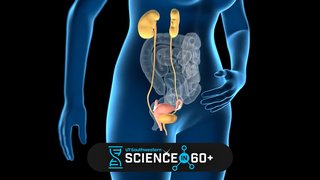Vocal cord dysfunction can trigger extreme breathing problems while exercising
June 9, 2021

Most athletes occasionally feel short of breath while running or exercising. But extreme shortness of breath accompanied by wheezing, coughing, and tightness in your chest is a sign that something is wrong.
Having these symptoms often leads to a diagnosis of exercise-induced asthma – a lung condition that causes a patient’s airways to narrow during strenuous physical activity. However, if symptoms do not improve with the use of an inhaler, asthma might not be the culprit – it could be vocal cord dysfunction (VCD), another condition commonly triggered by exercise.
Nearly 80 percent of VCD cases are misdiagnosed as asthma, which means patients are taking strong medications that don’t work for the condition they really have.
Fortunately, vocal cord dysfunction is not life-threatening, but its alarming symptoms can make patients fear their next attack and avoid exercise altogether – which can negatively impact their emotional and physical health.
Therapists in our multidisciplinary Voice Care team will teach you breathing and rescue techniques to control your vocal cords and throat. Vocal cord dysfunction is treatable and even preventable, with advanced speech therapy, but oftentimes the difficulty is getting the right diagnosis.
Vocal cord dysfunction vs. asthma
While VCD and asthma share quite a few symptoms, and it’s possible to have both, there are some differences. VCD, also called paradoxical vocal fold motion (PVFM), causes the vocal cords to close fully or partially while breathing in.
Nearly 80% of vocal cord dysfunction cases are wrongly diagnosed as asthma. If asthma therapies are not working, see a laryngologist, who can make sure the structures in your throat are working properly.
Lesley Childs, M.D.
So, instead of getting more air when you need it most, you feel like you’re getting too little. The result is a panicked feeling of not being able to breathe, accompanied by a high-pitched whistle upon inhaling that can be frightening to patients and bystanders alike. Vocal cord dysfunction is usually diagnosed in the teen years, and approximately 80 percent of patients are female.
Despite their name, your vocal cords’ primary purpose isn’t to produce sound; it’s to protect your lungs. Normally, the tiny vocal cord muscles close when you swallow to prevent food and drink from entering the windpipe. When breathing, they remain open, and the openings typically widen during exercise to maximize the amount of air you breathe.
Unlike asthma, vocal cord dysfunction causes problems while inhaling rather than exhaling. VCD can cause a high-pitched whistling sound (stridor) when you inhale. This is different from the wheezing noise more commonly made by people with asthma when they exhale.
Another condition that might be mistaken for VCD is anaphylaxis, or a severe allergic reaction. A key difference: Difficulty breathing due to anaphylaxis usually is preceded by other symptoms, such as breaking out in hives or swelling of the lips or tongue.
What causes vocal cord dysfunction?
VCD can occur suddenly, and its severity can range from mild to severe. We don’t always know what causes it, but there are things that can trigger VCD, including:
- Exercise
- Extreme change in temperature
- Gastroesophageal reflux disease (GERD)
- Stress, anxiety, and panic attacks
- Strong odors, such as bleach or tobacco
- Upper respiratory infections, such as a cold
Women tend to experience vocal cord dysfunction more than men, especially women who are self-proclaimed high achievers and perfectionists. This phenomenon may be due to women being diagnosed with anxiety twice as often as men. Researchers are working to better understand the associations between VCD and potential triggers.
What are the symptoms of VCD?
VCD can feel like breathing through a straw. Breathing in through closed vocal cords makes a high-pitched whistling sound. Other common symptoms include:
- Feeling like you’re choking or suffocating
- Feeling like you have a lump in your throat
- Frequent coughing or throat clearing
- Hoarseness
- Shortness of breath
- Tightness in the throat or chest
Call 911 if you experience new, unexpected respiratory distress or if you witness someone struggling to breathe. VCD is not life-threatening, but a severe asthma attack or anaphylaxis can be.
How is VCD diagnosed?
Patients often come to see us after several appointments with other specialists turn up an inconclusive or incorrect diagnosis. Your laryngologist may ask you to run on the treadmill or ride the exercise bike in our office. Then, we’ll gently run a scope (a camera on a long, flexible tube) through your nose into your throat to examine your vocal cord activity.
If they are closing when they should be opening, we can begin VCD treatment. Speech therapy is the best treatment for most patients. Rarely, a patient will have a structural vocal cord problem that requires medication or surgery.
Related reading: 3 signs your vocal cords may be damaged

How can speech therapy help?
Speech therapists are experts in rebalancing the vocal subsystems, including breathing. Your speech therapist will teach you strategies to keep your vocal cords open during exercise, preventing future episodes. They’ll also teach you rescue strategies – how to stay calm and release the vocal cords if they do close at the wrong time.
VCD speech therapy usually involves four to eight weekly sessions, plus practicing the techniques on your own several times a day. We also may use the treadmill and exercise bike to assess how you’re doing with your newfound skills.
Depending on your condition, we may refer you to other specialists at UT Southwestern who can help manage underlying conditions that may trigger VCD. This could include a gastroenterologist for GERD, a pulmonologist or allergist for asthma, or a psychologist to address stress or anxiety.
While it may not feel like it at the time, vocal cord dysfunction is not life-threatening. Tests have shown that people with VCD are getting enough oxygen. In the rare event you do pass out, your vocal cords will automatically open. However, don’t hesitate to seek emergency care if you have or witness someone having trouble breathing.
Struggling to breathe can be terrifying, and not knowing the cause or how to fix it can be scary and frustrating. An expert laryngologist can help provide answers, relief, and the peace of mind that comes with knowing what’s causing the problem in the first place.
To visit with a laryngologist, call 214-645-8300 or request an appointment online.











